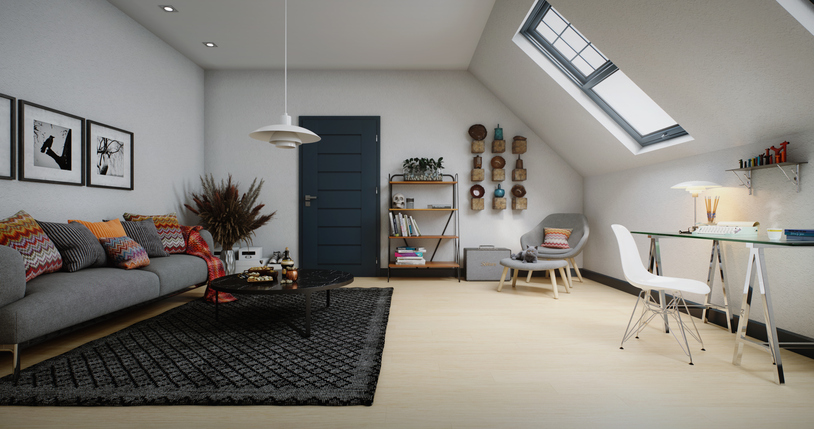Introduction
As the seasons change and daylight hours shorten, many people experience a shift in mood, energy levels, and overall well-being. This recurring pattern is often linked to Seasonal Affective Disorder (SAD), a form of depression triggered by the reduced exposure to natural light during fall and winter. One of the most effective non-pharmaceutical ways to combat this condition is by increasing indoor exposure to sunlight. Skylights offer an elegant and functional solution by bringing more daylight directly into the heart of your living spaces. Not only do they elevate home aesthetics, but they also support emotional and physiological health.
Here’s how thoughtfully placed skylights can help relieve the symptoms of SAD and create a more uplifting indoor environment.
Boost Mood Naturally with Skylights for SAD Relief
1. Boosting Natural Light During Shorter Days
During the colder months, we naturally receive less sunlight, which affects our circadian rhythm and serotonin production. Skylights introduce daylight into parts of your home that traditional windows can’t reach, like hallways, bathrooms, and interior rooms. This constant access to daylight can significantly help reset your internal clock, making it easier to wake up and fall asleep at consistent times. More natural light also supports higher energy levels throughout the day.
2. Improving Mood with Enhanced Lighting
One of the most immediate benefits of skylights is their impact on mood. The brain responds to sunlight by increasing serotonin levels, which regulate emotions and reduce depressive symptoms. Spaces illuminated with natural light often feel more open, calm, and peaceful, directly influencing how you feel throughout the day. This effect is particularly helpful for individuals struggling with SAD, who may find it hard to stay motivated or positive during darker seasons. Light therapy through design is a sustainable alternative to medication in many cases.
3. Reducing Artificial Light Dependence
Too much exposure to artificial lighting—especially blue light from screens—can negatively affect sleep and mental health. These lights can reduce the need to turn on lamps and overhead fixtures during the daytime, limiting your exposure to artificial light sources. This helps maintain your body’s melatonin production, which supports a more restful night’s sleep. It also creates a more natural lighting cycle in your living space, contributing to overall emotional balance.
4. Creating Healthier Home Office Environments
With remote work on the rise, your home office setup directly impacts productivity and wellness. Adding rooflights to your workspace improves focus, lowers eye strain, and provides visual stimulation through natural views of the sky. Natural light can sharpen cognitive function and lessen the midday slump. For those working long hours indoors during winter, this simple addition can make a dramatic difference in mental clarity and motivation.
5. Supporting Vitamin D Absorption
Sunlight exposure is the primary source of vitamin D, essential for immune function, bone health, and mood regulation. While rooflights don’t offer direct UVB exposure through glass, they still provide a connection to daylight, which encourages time spent in sunlit areas of your home. This often motivates homeowners to engage in activities closer to bright areas, subtly increasing their time in the sun’s proximity. A brighter home naturally encourages movement and energy, two elements that combat SAD symptoms.
6. Enhancing Bedroom and Living Space Ambience
Bedrooms and living rooms are where we begin and end our days, and these spaces heavily influence emotional well-being. Installing rooflights in these areas ensures gentle morning light greets you as you wake up, helping your body align with its natural circadian rhythm. Evening light, when controlled with blinds or shades, can gradually dim as the sun sets, signaling it’s time to wind down. This type of light transition is a natural remedy for disrupted sleep cycles, often experienced during winter months.
7. Adding Visual Space and Psychological Uplift
Dark, enclosed spaces can trigger feelings of confinement and contribute to depressive moods. By visually opening up a room, skylights make spaces feel larger and more welcoming. The view of the sky, even just clouds or stars, offers a moment of connection with nature, known to reduce anxiety and elevate mood. These design benefits go beyond style—they create environments that are emotionally nourishing.
8. Combining with Other Wellness Features
To fully harness their benefits, rooflights can be integrated with smart ventilation or daylight sensors. This allows for better airflow and lighting management throughout the day. For homes that incorporate wellness-focused designs, like yoga rooms, meditation corners, or spa-inspired bathrooms, rooflights are the perfect architectural complement.
Incorporating rooflights into your home is more than a design upgrade—it’s an investment in your well-being. For individuals affected by Seasonal Affective Disorder, the boost in natural light can lead to improved mood, better sleep, and higher daily energy. As our homes continue to serve as both living and working environments, optimizing natural light becomes essential for mental health. Whether you’re building new or renovating existing rooms, adding a skylight is a simple, impactful step toward emotional resilience.
Conclusion
Is your home ready for more light, more comfort, and a happier atmosphere? Call our team at Clear Winner at (760) 338-0728 and discover how our custom skylight solutions can transform your space.






